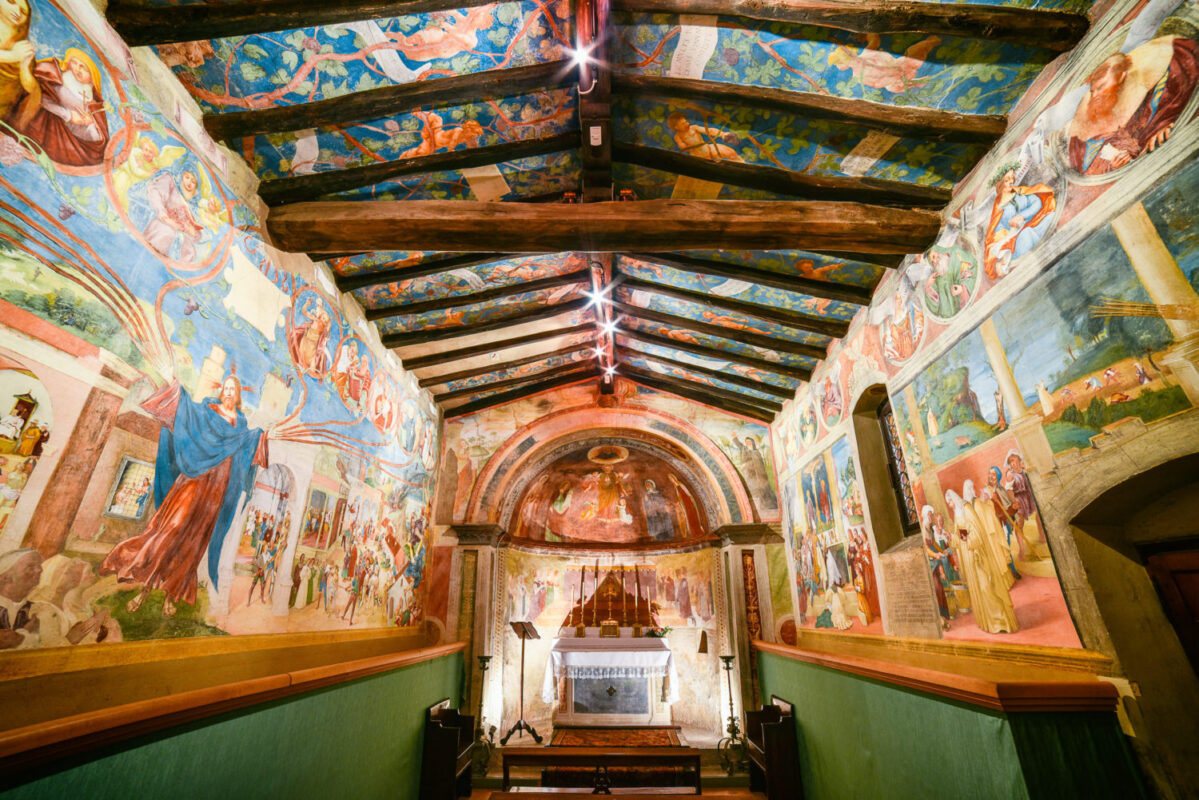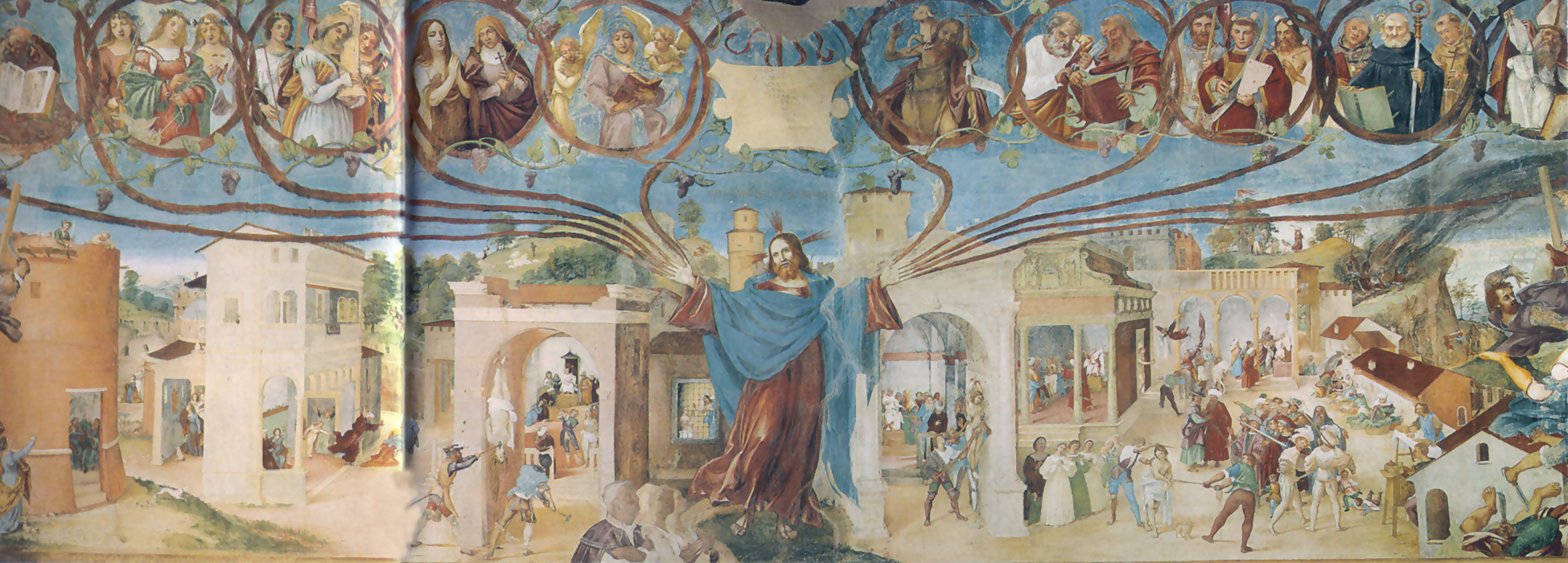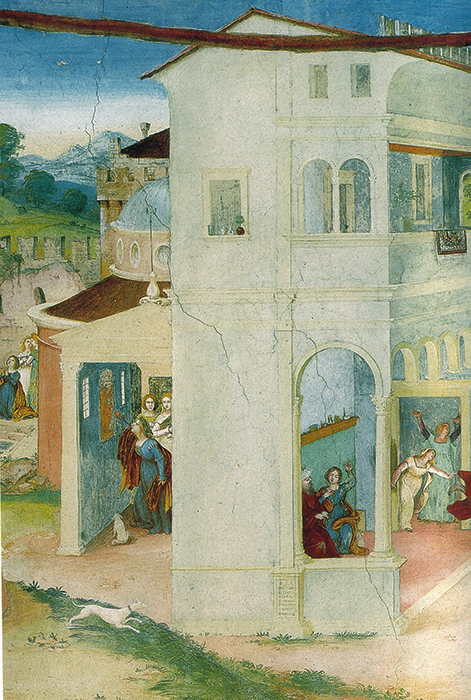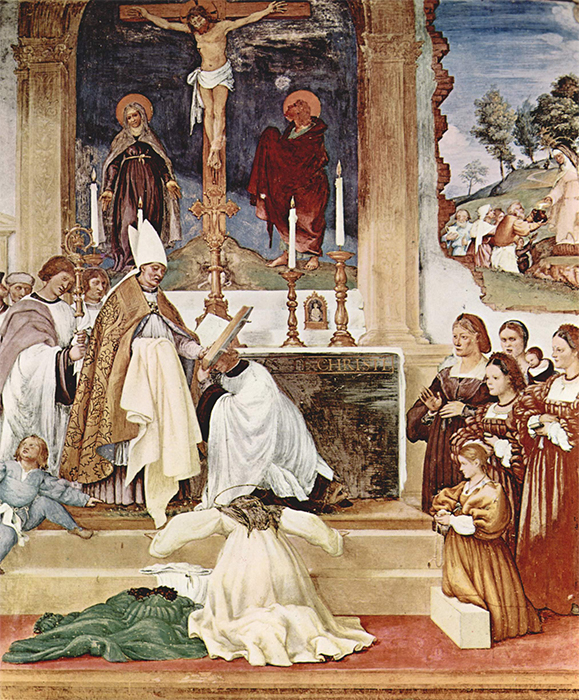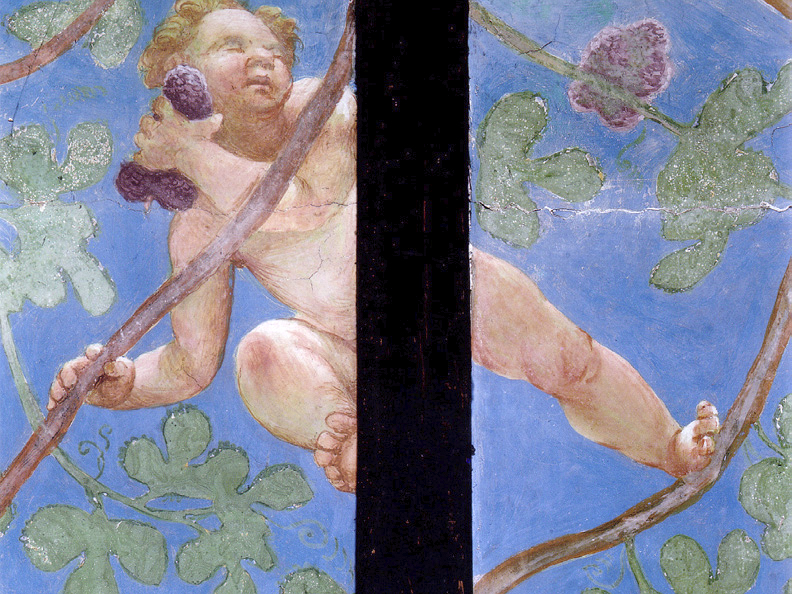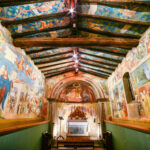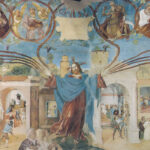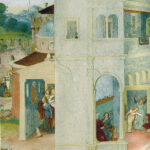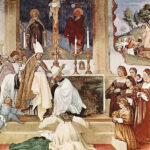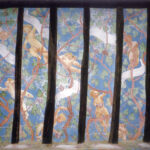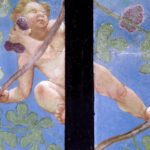Trescore Balneario – Suardi chapel
The small oratory of Trescore Balneario, dedicated to Santa Barbara and Santa Brigida, was built at the beginning of the 16th century by the cousins Giovan Battista and Maffeo Suardi, they were a member of a noble family from Bergamo who in the 13th century, during the Communal period, had had great importance within the city. The apsidal area was probably frescoed already shortly after construction by an anonymous painter. The other three walls and the ceiling were frescoed in 1524 by Lorenzo Lotto. The Venetian painter, in those years very active in Bergamo, was in a friendly relationship with Giovan Battista Suardi. The frescoes, which have a rapid and cursive line, narrate for episodes the lives of the saints to whom the oratory is headed with scenes that, in some cases where they represent aspects of everyday life, anticipate the models of the so-called genre painting. A second communicative register probably agreed between the client and the artist, is represented by the figure of Christ, in the centre of the wall with the stories of Saint Barbara, from whose fingers branches of vine unravel which form ten clypei containing figures of saints. On the sides of the scene some harvesters armed with billhooks, representing heresies, are driven out by Saint Jerome and Saint Ambrose. On the other side, other clypei contain prophets and sibyls who had prophesied the advent of Christ. The ceiling is decorated like a grape pergola with putti.
In the decoration of this oratory, one can see an act of devotion on the part of the clients, in a very worrying period. We are in the early years of the Protestant reform and of the subsequent Catholic counter-reformation with also all the questions concerning the representation and adoration of the images of Christ and the Saints. But we are also in the years of the struggles between the Habsburgs of Austria and Spain and the Valois of France for the control of the Duchy of Milan, and the place where Villa Suardi stands is right on one of the routes travelled by the imperial troops to reach Milan. We note, in the scene where Saint Barbara is dragged captive to the market, the representation of two imperial Lansquenets. This mercenary corps, just over two years after the completion of the frescoes, would be one of the responsibles of the bloody sack of Rome of 1527.

